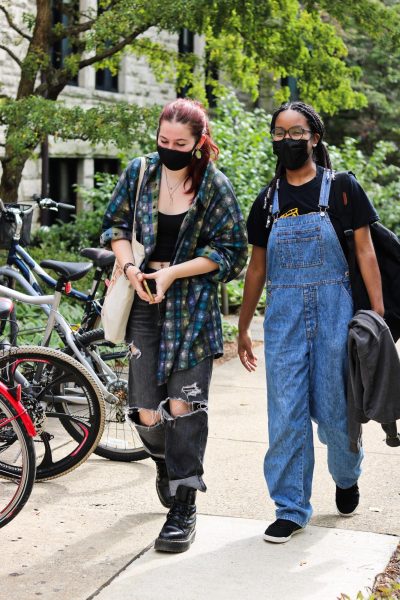Oberlin Should Focus on Sustainability in Future Legacy
This article is part of the Review’s Student Senate column. In an effort to increase communication and transparency, student senators will provide personal perspectives on recent events on campus and in the community.
The General Faculty Council has decided who will serve on the Academic Administrative Program Review Steering Committee, which will soon be announced to the rest of the campus. At such a critical moment, it is important to make time for nuanced reflection about the trajectory, values, and vision of our institution — something Student Senate has focused on this semester.
During the student-trustee forums last month, one trustee convincingly asserted that Oberlin was not facing anything as dramatic as bankruptcy or financial ruin. Instead, he made clear his concern that Oberlin was threatened by a possible crisis of mediocrity. He made it clear that we have reached a fork in the road and must choose a path that will define our legacy.
Oberlin has long been recognized for its excellence in academics, music, and activism. However, the financial difficulties the school faces and the national threats to small liberal arts colleges puts our right to call ourselves “excellent” in doubt. If the requisite changes are not realized, in six years Oberlin will encounter a financial deficit of roughly $52 million. The AAPR will prevent this and achieve fiscal solvency. What is worrisome, however, is the chance that hasty or incommensurate actions will negatively affect Oberlin’s ability to excel in the fields it has earned its recognition.
President Ambar has voiced these same sentiments. In her presentations to constituent groups, she argued that Oberlin needs to be bold and embrace this testing time as an opportunity. A restructuring of Oberlin is a worrying prospect, but it should also be inspiring. Times like these call for visionary ideas and creative solutions. They necessitate that all Obies step forward to help craft the future of this institution.
Student Senate has also thought extensively about what the student body can do to make our vision of the future a reality. The College has a chance to reposition itself as a school that excels in particular areas and is lauded for its exemplary successes. Oberlin has long been recognized for its stellar accomplishments, but at this juncture, we have the chance to picture the precise ways we want Oberlin to shine. Many of our peer institutions stand out for specific programs and are able to foster an identity around particular focuses. Middlebury is known for its language education, Macalester for its emphasis on internationalism, and Kenyon for its sub-par memes. Oberlin too has the chance to make itself known by embracing a comprehensive campus philosophy.
Sustainability is one such ideal that the campus should fully embrace as we move into a new era. This buzzword has a dual connotation, and both of its meanings are central to the Oberlin we should attempt to create. Sustainability implies financial longevity and self-sufficiency, a stable endowment, and the preservation of an environmentally-conscious Oberlin for future generations. Unfortunately, there may be a tendency to dissociate these two objectives in the wake of the current budget malaise. Though short-term cuts to environmental initiatives may look promising, they will be made at the expense of long-term gains. All parties must be aware of this issue and should actively work to counteract it.
What is Student Senate doing to advocate for sustainability? The Capital Projects and College Infrastructure Working Group is setting out to foster communication between the administrators and the student body while presenting creative student solutions that will enhance the long-term environmental and financial success of the school. Any new dining and housing arrangements should embrace sustainable and environmentally conscious options. Investments in these areas will pay off in the long-run and prevent future feelings of contrition about missed opportunities.
Though frightening, reimagining what Oberlin will look like in the future necessitates the creation of a bold vision: a campus that is actually carbon neutral; buildings that are livable, affordable, and environmentally responsible; and a campus climate that encourages individual acts of environmentalism rather than nihilism and apathy. If the AAPR chooses sustainability as one of its guiding tenets, this college will be sure to prioritize both long-term success and the ethical principles it has always acclaimed. Is Oberlin really facing a crisis of mediocrity or is this instead an opportunity for sustainable growth?




